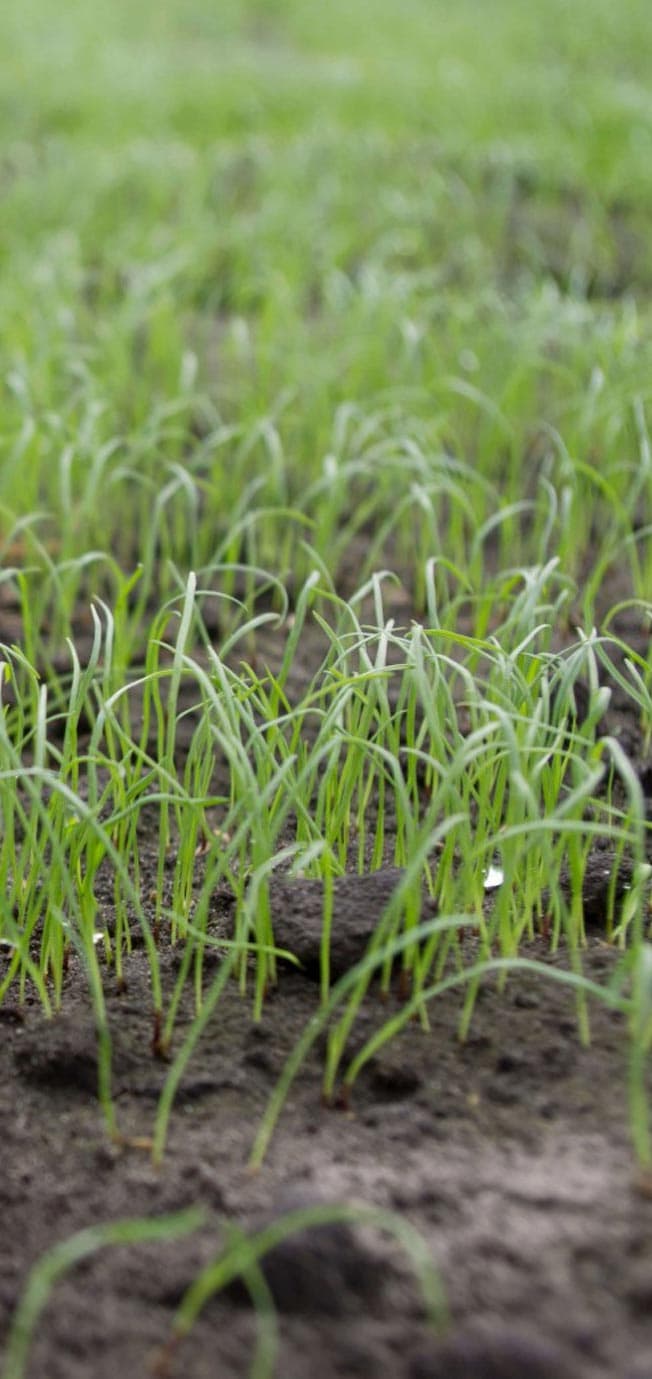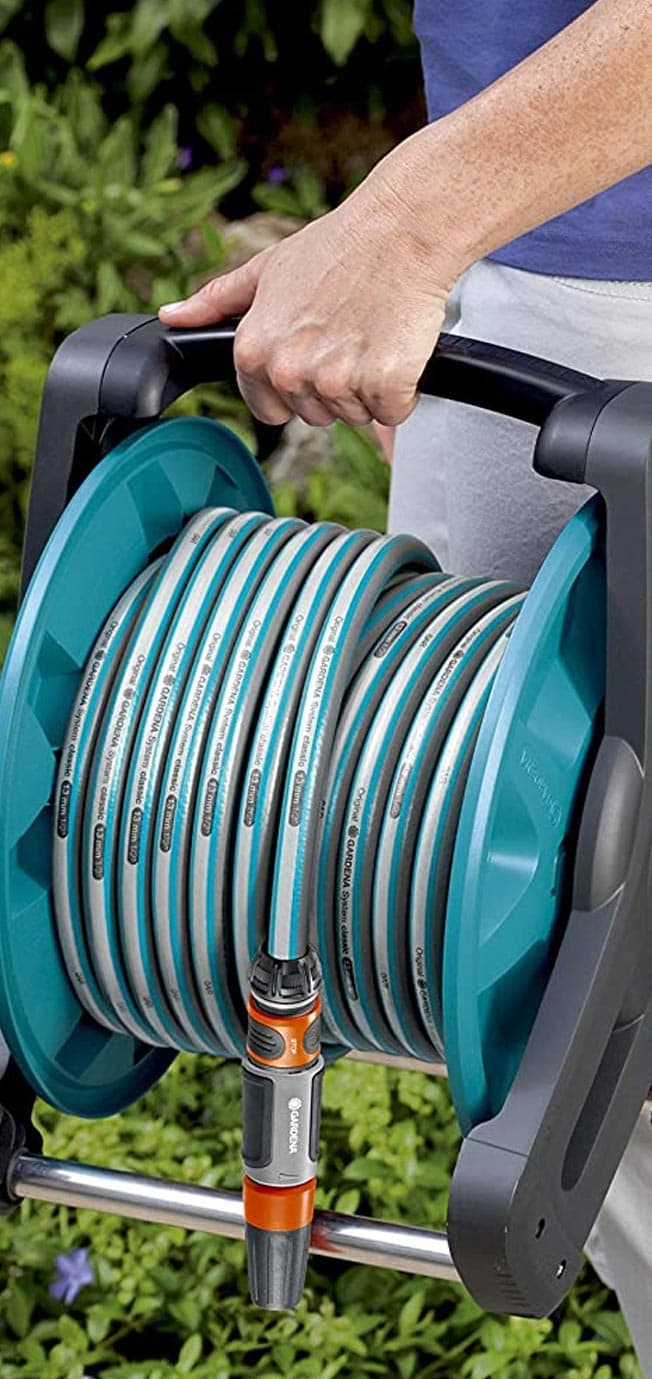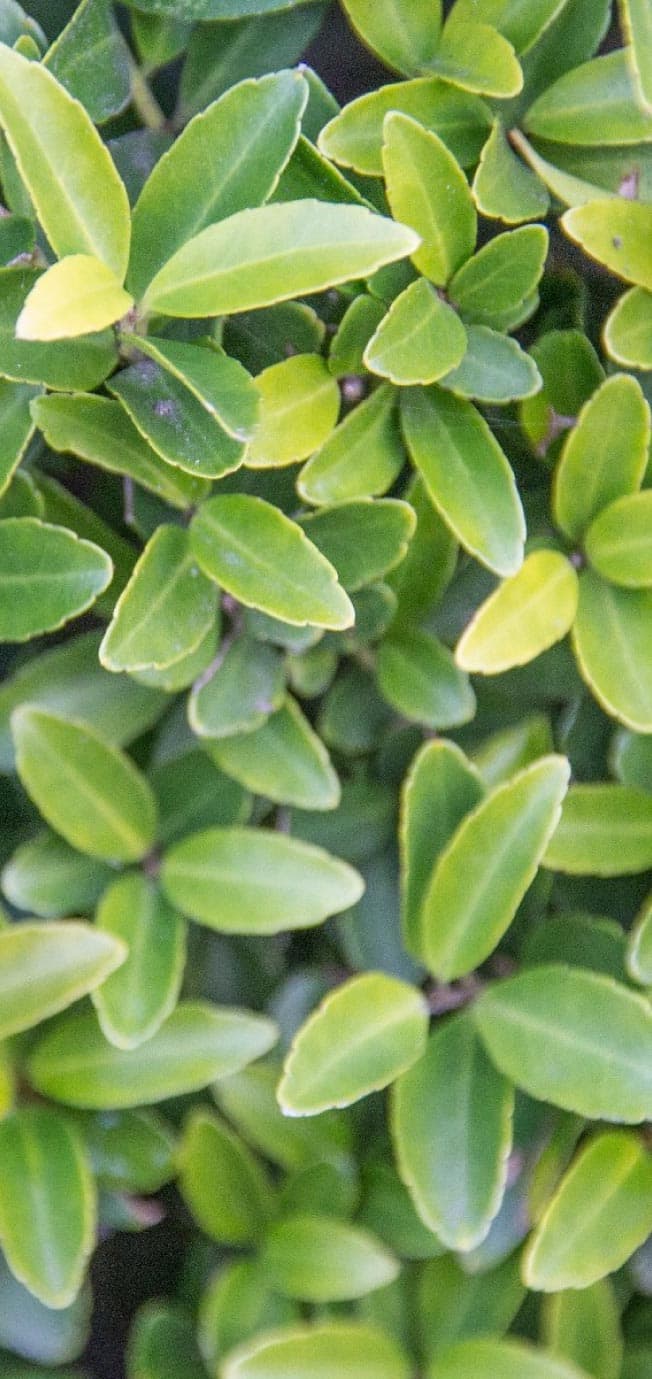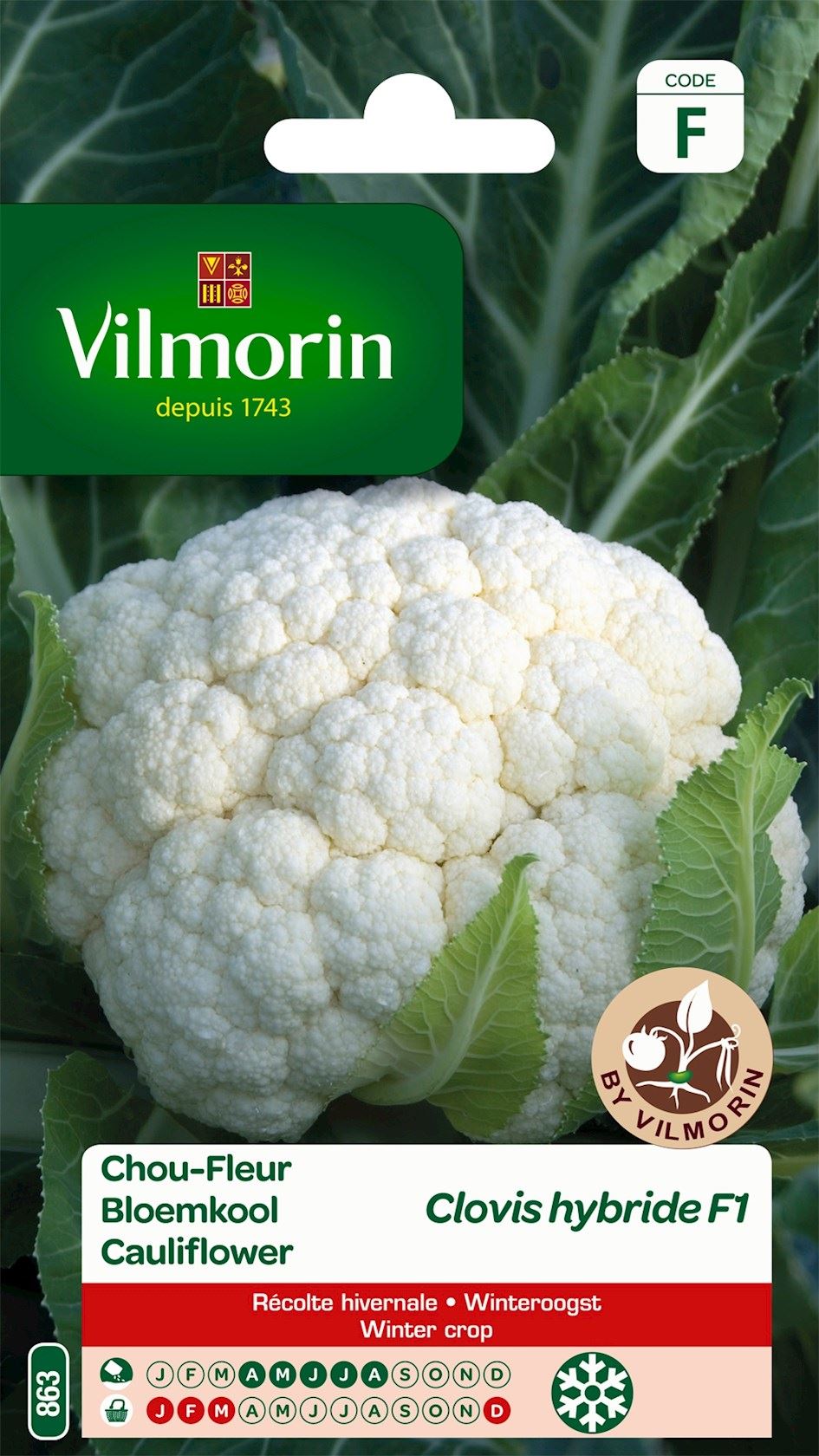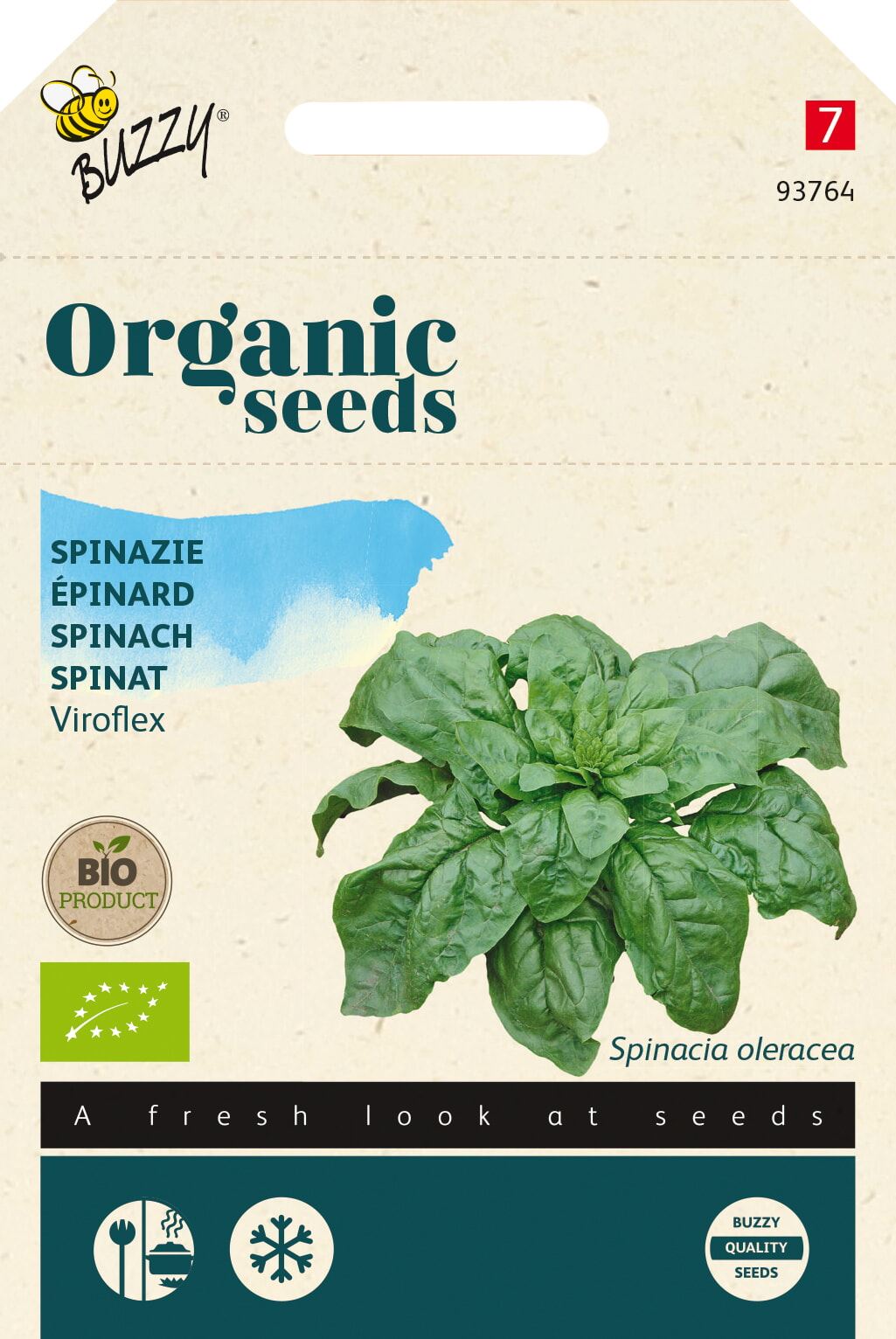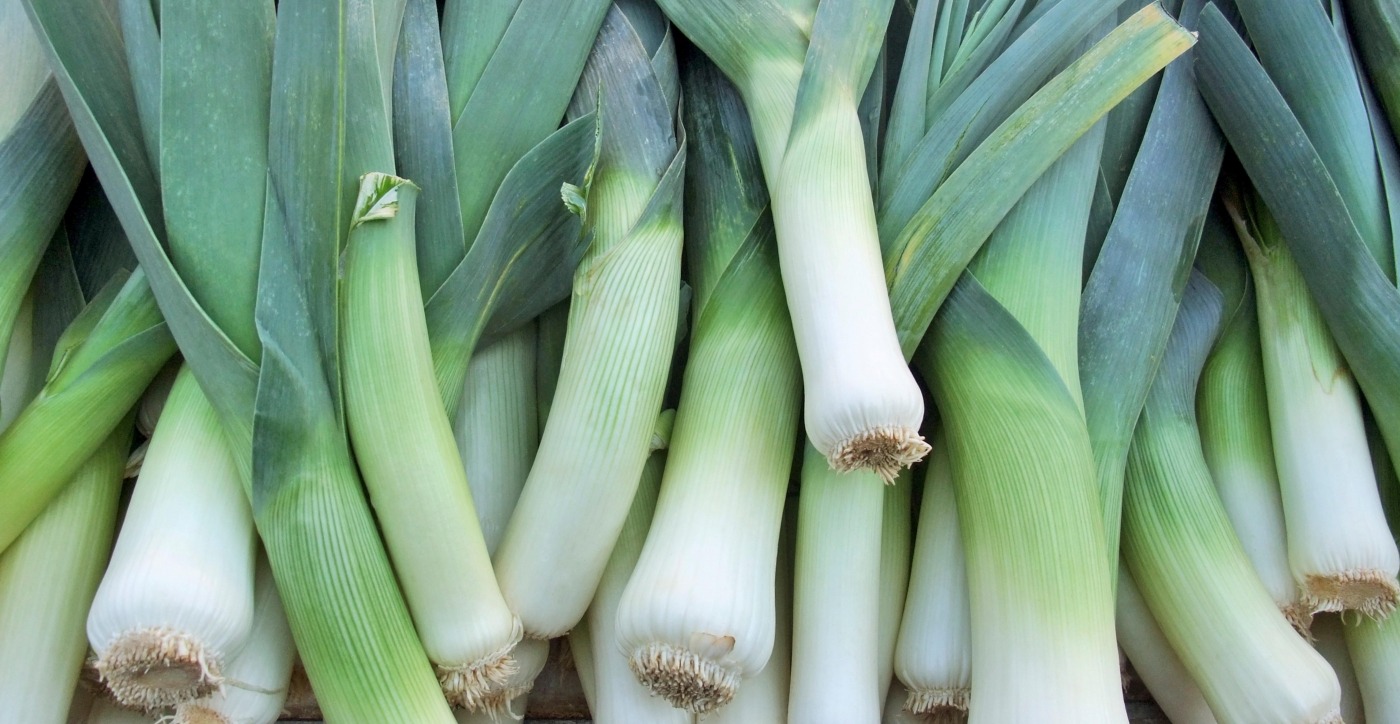
6 tasty autumn vegetables
Even in summer and autumn, we can still sow and plant plenty of vegetables in the vegetable garden. These autumn vegetables are not only very tasty, but are also less likely to fall prey to all sorts of pests and diseases. That way, we get fresh vegetables on our plates all year round. In this article, we present our top 6 autumn vegetables with growing tips!
1. Winter leeks
Enjoying fresh leeks all year round? That is possible! By planting winter leeks you can get fresh leeks from the garden from January to early April. It is best to harvest the winter leeks by April, otherwise they may start to sprout. Then the leek blooms, and you get a hard core in the stem. For the other months you can plant summer or autumn leeks.
Care
Young plants of winter leeks can be planted from mid-June to mid-August. These are frost-resistant, and will provide you with fresh leeks all winter and spring. It is important to water well when planting. Water every day in dry weather for the first two weeks after planting. It is always a good idea to cut off the top leaves when planting. Also be sure to add plenty of fertiliser to the soil because leeks need a lot of food to grow well. It does not matter what kind of fertiliser, leeks are not picky.
Tip: Leek requires a lot of fertiliser and leaves the soil exhausted afterwards. A good idea is to plant beans in the same spot the following year. They require nitrogen-poor soil.
Sowing or planting?
We recommend buying bare-root plants anyway. Farmers do this too, and that is usually a good sign. The leek plants you buy from us are always freshly harvested and are of the best varieties. For winter leeks, we recommend the Poulton variety. This is a typical grower's variety and seed is almost impossible to obtain in small quantities.
Do you want to sow leeks anyway? Then "wintergreen" or "blue-green winter" are a good choice.
Diseases
Keep a close eye on winter leeks because there are a number of invaders lurking around. The second generation of leek moths is very active during the warm summer months. These moths target the young leek plants. So check several times a week as these small, voracious culprits can do a lot of damage in a short space of time. Has the leek moth got hold of your harvest? Then there are various natural pest controls that can provide a solution. You can hang a delta trap in the garden to catch the leek moths. The pheromones that you put in the trap will attract the male preimots. They then fly into the trap and get stuck. This system prevents female preimots from laying new eggs because they are not fertilised. Thus, the larval population will gradually decrease. Place 1 trap per leek bed from April to the end of August. One pheromone will keep your vegetable garden moth-free for up to 6 weeks. Attention: In warm weather, it is recommended to replace the pheromones after 4 weeks for optimal effect.
In addition to the preimot, leek rust can also strike hard. You can recognise it by the brown and orange spots on the leek leaf. As soon as these spots appear, they can quickly take over your entire harvest. You can treat them with Difcor to prevent further damage.
Culinary
Leeks can be used in many winter dishes. They can be used to make delicious soups, stews or stir-fries with Brussels sprouts and beetroot.
2. Winter cauliflower
A big advantage of winter cauliflowers is that they are not as susceptible to caterpillars and diseases as summer cabbages are. It also provides some greenery in the vegetable garden during the dreary winter period.
Care
Winter cauliflower can be planted from the end of July. Choose a sunny spot, and leave sufficient distance (preferably 75cm) between the cabbages. Winter cauliflower likes a humus-rich and moist soil. There should also be sufficient lime in the soil.
Winter cauliflowers need sufficient moisture, so make sure they do not get dry! You should preferably water them in the evening, but do not 'drown' them. In very damp soil or if the cabbages are kept in the same place over and over again, club foot can occur. This is a fungal disease that causes the cabbage to stop growing and a tuber forms on the stem just above the ground. This means they will not grow into a full-fledged cabbage.
As soon as small cabbages form, tie the leaves together to protect them from the sun. This gives the cabbage a nice white colour.
Diseases
The great advantage of winter cauliflower is that it is not bothered by pests or nasty fungal diseases.
Culinary
There are endless variations with cauliflower. You can make the classics from grandma's kitchen, for example cauliflower in white cheese sauce. But you can also experiment with an exotic curry or roasted cauliflower from the oven!
3. Sugar loaf or green leaf
Sugarloaf, also known as green leaf, is a bitter leafy vegetable. It is related to chicory and red chicory (also called radicchio). The taste is a combination of chicory and endive. This forgotten vegetable has a green elongated head. On the inside it has a light yellow colour.
Care
You can sow this vegetable from June to mid-July, or plant it from July. Do not plant too early otherwise it will bolt. Green Lettuce is not demanding and does well in any soil. It is also satisfied with some simple compost. Special fertilizers are not necessary. You can give chicory a place in the sun or half shade. Is frost predicted? Then make sure you put it in a shelter. Sugarloaf can tolerate some light frost, but it will not survive a severe night of frost.
Diseases
Green Lettuce is not susceptible to disease. What you have to watch out for, is that it does not start to sprout. When the temperature is too low during the cultivation, the chicory can start to flower.
Culinary
In the kitchen, chicory is usually stewed. Do you like a bitter touch to your dish? Then you can leave the green tops on. Why not replace the classic chicory in the rolls of hams with chicory?
Tip from Marcel

Tip from Marcel
Use a green manure crop to give your vegetable garden plants a boost! Yellow mustard is the most commonly sown crop. This crop is a fast grower, and covers the soil in no time. It also produces a lot of organic matter, which can only benefit your plants. Sowing is possible until September, depending on the type of green manure crop.
4. Endive
Endive is an annual leafy crop closely related to chicory. You can distinguish two types: broad-leaved endive and curled endive. The difference between the two types is not huge: curled endive has a slightly more bitter taste and is more difficult to grow.
Although endive can be grown almost all year round, it is particularly good in the autumn. The ideal planting time is in July and August. Because endive is so easy to grow, many gardeners have it in their vegetable garden.
Care
Endive can be grown both in spring and autumn. However, many vegetable gardeners choose to plant it in the autumn. Not only do we associate endive with winter comfort food, but the chance of sprouting is also greater in spring.
Endive can be sown until the end of July, when temperatures are on average high enough. Do you sow at a temperature below 15°C? Then the head cannot grow sufficiently and it will overshoot more quickly.
Planting is possible until the end of August. Endive forms the largest heads in autumn. So make sure there is a planting distance of 40cm between the plants. Are they too close together? Then the leaves will rot faster. This type of leaf requires a lot of nutrition. Make sure you fertilise sufficiently, especially if the endive was preceded by another crop that absorbed a lot of nutrition from the soil. For best results, use a combination of compost and farmyard manure. Moisture is also an important factor in ensuring that the heads grow well. Curly endive is more sensitive and will show dry edges more quickly if there is a lack of moisture.
The sunny and long days in summer ensure that the endive grows well. Make sure you take your fully-grown heads out of the ground on time so that they do not overshoot. Endive cannot withstand freezing temperatures. Is night frost predicted? Protect them so that your harvest is not lost!
Bleach
Sunny and warm autumn days are the ideal time to bleach the endives. The heads are still in full growth then. As soon as the cold sets in, the growth of the heads comes to a halt. Tie the endive with a rubber band and leave them in your vegetable garden for another three weeks or so. Because the sun cannot reach the heart of the head, it will remain light in colour. You can also shield the entire head from the sunlight under a bucket or container. Make sure that it is ventilated well on a daily basis. Bleached endive not only looks nice because of the colour change, but it also takes away some of the bitter taste. Bleaching is best done with endive that is grown under glass. Do you want to bleach your endives outdoors? Make sure you protect it from the rain by placing a roof over the endive. That way mould has less chance to strike.
Diseases
In autumn, snails often hide between the heads of plants. This is the ideal hiding place for them. However, they will not feast on your endive as much as in spring, because the autumn variety has a stiffer leaf that is less tasty.
Culinary
To make the endive softer and less bitter in taste, you can tie the inner leaves together. Or put a pot over the entire plant for a fortnight.
In winter, a steaming, hearty endive stew provides the necessary warmth and vitamins. However, you can also get creative with it and fill the endive leaf like a wrap.
5. Autumn step
Autumn turnips can be sown in July and August. They grow very quickly, so you do not have to be patient to enjoy a delicious turnip. In September and October you can already start harvesting!
Care
Autumn turnips need loose and airy soil to grow well. In winter you can mix some compost under the soil. They do not need much extra nutrition, some cow manure grains are fine. Moisture, on the other hand, is essential for beautiful turnips. The roots of the young plants are still too small to extract moisture from the soil themselves. So make sure they get enough moisture. A place in the sun also helps the formation of the tubers. Autumn turnips should be allowed to grow a little larger than the spring variety. You can harvest them as soon as they reach 5cm but you can also leave them until they are 7cm. Because the tubers can be harvested so quickly, you can sow a row several times. This way you can enjoy fresh turnips for a long time!
Culinary
The autumn turnips have a slightly sweeter taste than those from spring. You can, for example, roast the turnips in the oven with new potatoes and rainbow carrots. Or how about stuffed turnips? The foliage is also edible.
6. Lamb's lettuce
Its name suggests otherwise but lamb's lettuce, also called corn salad, is actually not related to lettuce at all but to valerian root. The big difference is that corn salad is a biennial plant while other types of lettuce only last one year.
Care
Corn salad can withstand the cold, and is therefore ideal for cultivation in autumn and winter. This vegetable can be grown both outside and in the cold greenhouse. To enjoy a few fresh green leaves in late autumn, sow from mid-July to mid-September. Autumn lettuce not only provides a welcome change from the typical tuberous and bulbous vegetables in the winter months, but it will also grow less quickly than spring lettuce.
Corn salad is not fussy at all, and can thrive in all soil types. Do you have a free spot in your vegetable garden? Then plant some corn salad there as a filler. That way you make optimal use of your vegetable garden, and you have an extra tasty vegetable as well! Corn salad does not need a sunny spot but appreciates a few rays of sunlight.
Sow the lamb's lettuce thinly in rows 15 cm apart, leaving 4 cm space between each future plant. Again, it is best to sow at different times so that you can pick the lettuce throughout autumn and winter. Did you only start sowing in mid-September? Then you will not be able to harvest the lettuce until after the winter, and you should cover it during cold periods. Offer the lettuce shelter from rain and frost. For this you can use a plastic tunnel. Corn salad usually takes up leftovers from previous crops. You may want to mix a small amount of organic fertiliser into the soil to give the lettuce an extra boost.
Diseases
Corn salad is also a true delicacy for the snail. Prevent the fungal disease Botrytis (grey mould) by maintaining sufficient planting distance (thin out if you are sowing).
Culinary
Lettuce is often used raw, as a garnish or to add flavour. Corn salad can also be used in a fresh soup.
Want to read more about the autumn garden?👇
More info? Receive all our gardening tips directly in your mailbox!
We'll only email you handy facts, green advice and our best promotions & discounts. You'll receive it about once a week and you can unsubscribe at any time. No spam, promise 🤞

